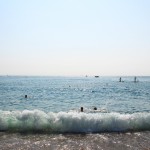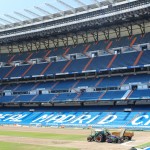Five main sights to check out at Rossio Square in Lisbon
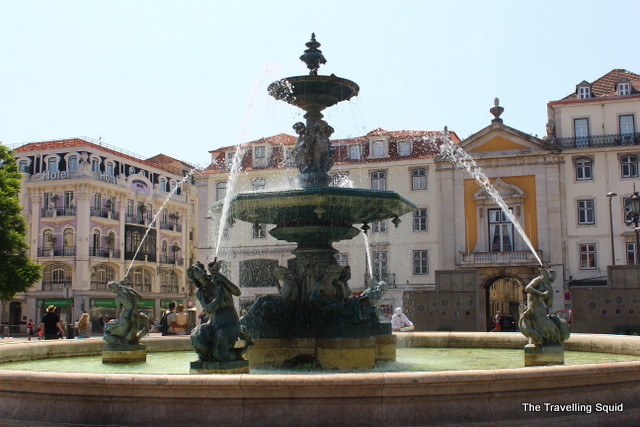
Rossio Square was the first tourist sight I visited while in Lisbon. It was nice, with the long column, the mosaic flooring and the old street houses. Being the ‘sotong/squid’ I am, I had not read up much of the place before I was there and did not know what they represented.
So here I am, with a short history of Rossio Square (its actual name is Pedro IV Square but not many use it now), which is part of the Baixa area of Lisbon. Enjoy the little history, with credits to Wikipedia.
History & Culture
According to Wikipedia, Rossio Square has been one of Lisbon’s main squares since the Middle Ages. Rossio Square has seen popular revolts and celebrations, bullfights and executions, and is now a preferred meeting place.
Some of the cafés and shops of the square date from the 18th century, like the Café Nicola. It was where poet Manuel Maria Barbosa du Bocage used to meet friends. Other traditional shops include the Ginjinha, where the typical Lisbon spirit (Ginjinha – a cherry liqueur) can be tasted. The Maria II Theatre to the north of the square made the area popular with Lisbon high society in the 19th century. Today, it is frequented by Lisboners and tourists.
Don’t be stumped by the number of foreign looking statues and fountains there – here are five main sights to check out at Rossio Square in Lisbon.
1. Column of Pedro IV
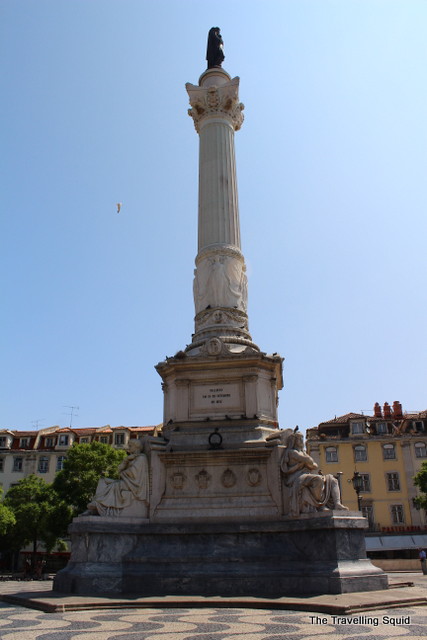
The Column of Pedro IV is a monument 27 metres tall, that you’ll be bound to notice once you have arrived. The monument was erected in 1874 and gave name the name Pedro IV Square to Rossio Square, though it was never widely accepted.
The column is made to reflect Pedro IV, King of Portugal, who was also the first Emperor of Brazil. His bronze statue stands atop of a tall Corinthian order column. At the base of the column, there are the four female allegorical figures of Justice, Wisdom, Strength, and Moderation, qualities attributed to Pedro IV.
An urban legend – a statue meant for someone else?
There is an urban legend that the statue atop the Column of King Pedro IV had actually been originally designed for the Emperor Maximilian I of Mexico. As the Mexican emperor was shot in 1867, shortly before the completion of the statue, it is said that the statue was then bought for the beautification of Rossio Square. Several historians have proved this urban legend to be incorrect, pointing out the details of the statue that clearly symbolize the Portuguese King, such as the Portuguese Coat of Arms on the buttons, the collar of the Order of the Tower and Sword.
* * *
2. Baroque Mermaid fountains
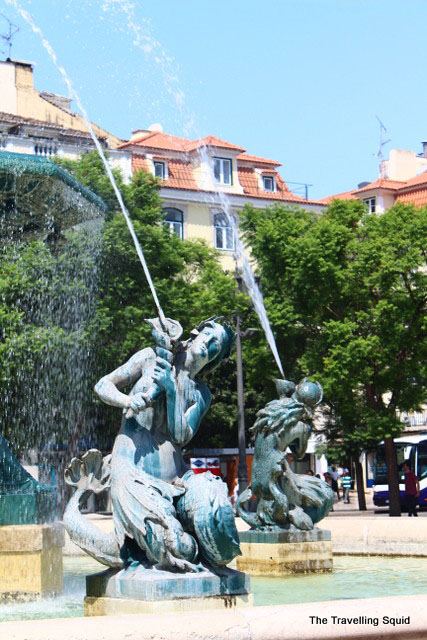
The mermaid fountains was my favourite sight at Rossio Square because they were so lifelike and elegant. Sadly, I was unable to get more information on their purpose and history despite researching online and flipping through guidebooks. All I know is that they were made of bronze and were imported from France.
If you have more information on them, please drop a comment!
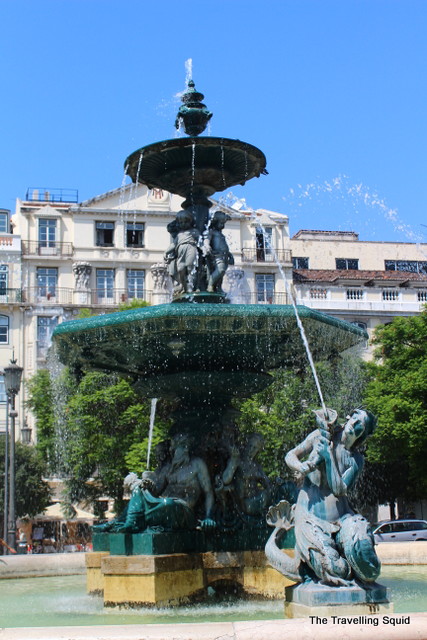
3. D. Maria II National Theatre
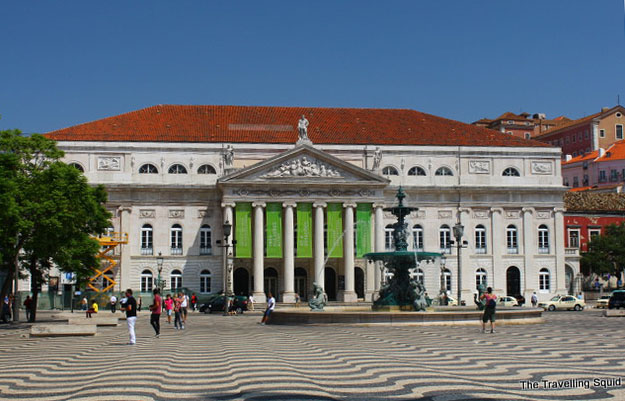
The National Theatre D. Maria II is a theatre in Lisbon, Portugal. The historical theatre is one of the most prestigious Portuguese venues and is located in the Rossio square, in the centre of the city.
The theatre was built on the north side of Rossio square on the site of the old Estaus Palace, built around 1450 as a lodging for foreign dignitaries and noblemen visiting Lisbon. In the 16th century, when the Inquisition was installed in Portugal, the Estaus Palace became the seat of the Inquisition. The palace survived the 1755 Lisbon Earthquake, but was destroyed by fire in 1836.
Today, guided tours are available at €6 for adults and a play costs approximately €17 per ticket, depending on seating.
4. Portuguese Mosaic flooring
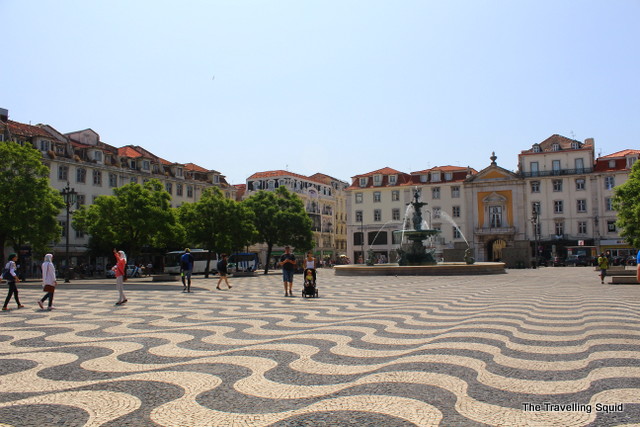
The first thing I noticed about Rossio Square wasn’t the monuments or towering column, but that of the flooring. It was in waves of black and white, which gave the impression that there was some sort of movement on the pavement, like waves.
According to Wikipedia, Portuguese pavement is a traditional-style pavement used for many pedestrian areas in Portugal, including that of Rossio Square. It can also be found throughout old Portuguese colonies such as Brazil and Macau, however the use of such art form appears to be dwindling, according to this write-up.
Very few workers will admit to enjoying this arduous labour, where long hours are spent painstakingly laying the stones in a prostrated position. Low wages fail to attract apprentices. Once an activity performed by hundreds of craftsmen in Portuguese cities and villages, traditional paving is increasingly becoming restricted to conservation works or important architectural projects. Less abundant materials, dwindling numbers of craftsmen and criticism to its widespread use are forcing municipalities to consider other alternatives.
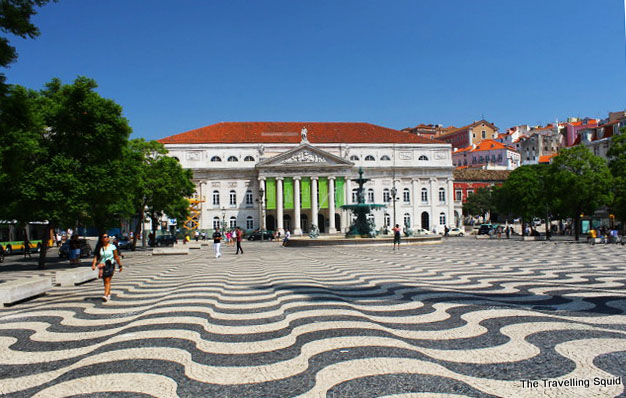
5. Quaint little houses

The buildings in Rossio Square are not the most well maintained, but I found them to be very quaint and authentic, just like the one in the photo above. With a rich carving around the windows and a Victorian styled balcony, I could imagine aristocrats looking out from their windows into the square, while watching celebrations and city events. It’s a sight to remember.
Have you been to Rossio Square in Lisbon? Do share your thoughts on it.

